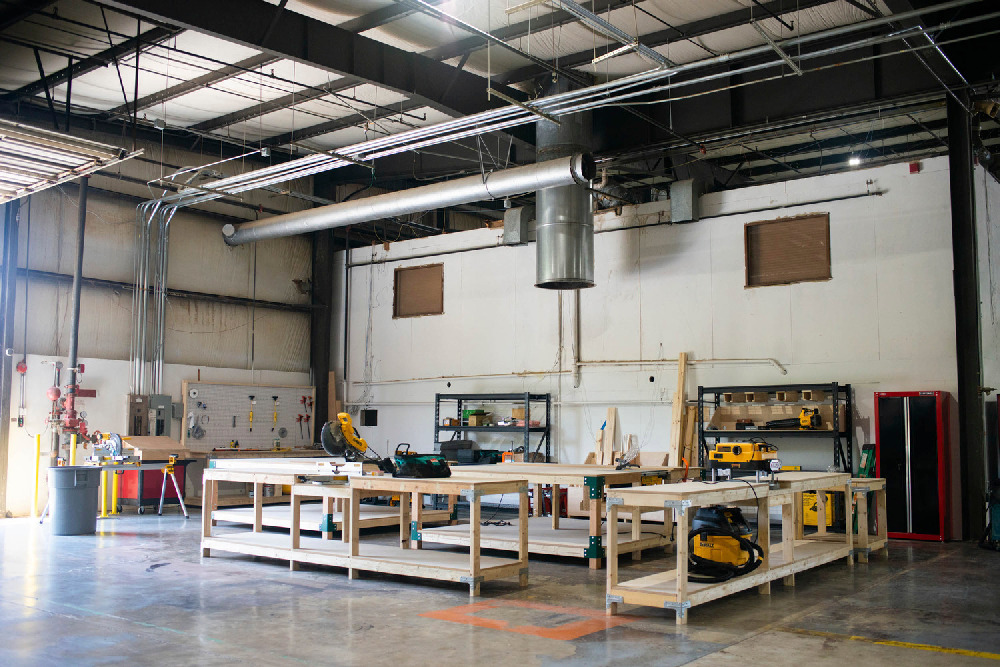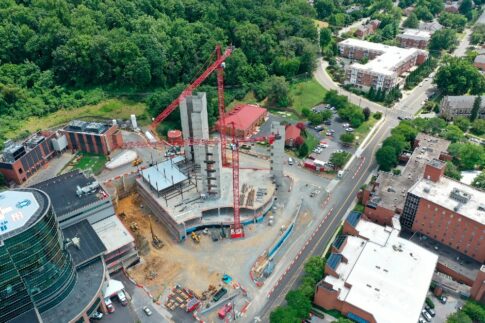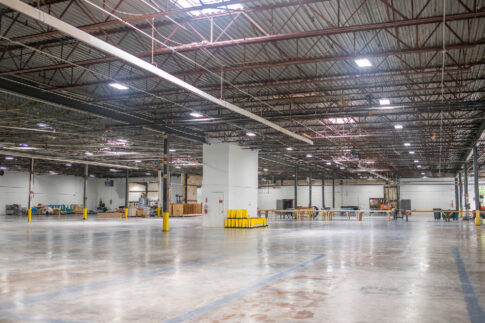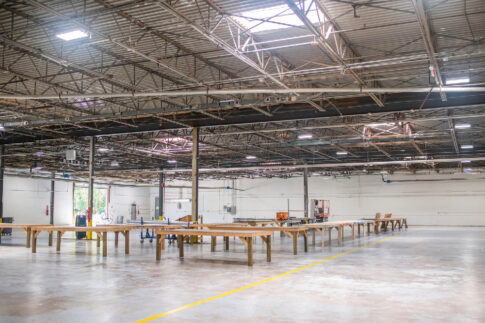
Game-changing warehousing strategies for 2023
By Josh Young
As we look to 2023, the construction industry is still adapting to ongoing supply chain impacts, cost escalation and logistics challenges.
While some of the extreme lead times are beginning to ease, we’re still predicting a gentle rise – but a rise nonetheless – in escalation. To manage the costs and help clients get the most value for their budget, warehousing for material storage and prefabrication has been a gamechanger.
Utilizing warehouse space isn’t new in the construction industry, but it has traditionally been limited to large, multi-year projects, or those on tight, urban sites. However, the cost of warehouse leases – or purchases – weighed against challenges in today’s marketplace make the practice more accessible than ever. For example:
- Warehouses provide more control over budgets and schedules. Costs, lead times and availability are still shifting. With warehouses, teams can buy materials when costs are favorable, or as they’re available, and store them until needed without cluttering the jobsite or risking damage. In the case of prefabrication warehousing, this approach significantly reduces waste at the project site. Most assemblies are built exactly as modeled and excess material isn’t shipped to the site.
- We’re able to deliver higher, and more consistent, quality. The warehouse provides a controlled environment for offsite fabrication and assembly, increasing quality.
- They allow us to create a plan for more efficient use of labor. Fabrication and assembly can be done more efficiently in the warehouse than at the jobsite, while kitting before delivery saves time. This gives more flexibility in scheduling and can reduce the workforce requirements at the jobsite. Further, in a warehouse environment, trade contractors can work together to assemble components of a system, creating even more efficiency.
- They can help us attract talent through better, safer working conditions. Warehousing can provide a hiring and retention advantage, giving craft professionals the opportunity to spend most fabrication and assembly time in a climate-controlled environment. This provides a schedule benefit in the event of inclement weather. Fabrication can continue inside a warehouse, whereas many jobsite activities can be severely impacted by weather conditions. A controlled environment also reduces the risk of workplace injury.
Although it sounds logical, many teams still find themselves struggling to justify the upfront costs of space, staffing and logistics to their clients on projects of all sizes.

On my current project – an expansion at Carilion Roanoke Memorial Hospital in Roanoke, Virginia – it was clear that the hospital’s campus couldn’t accommodate the material laydown space needed to support the project over the course of five years.
While we already planned for a prefabrication warehouse, Robins & Morton and our joint-venture partner, Branch Builds, decided to present a plan for multiple warehouses – one specifically for material storage on long-lead-time items and those that will likely be subject to significant cost escalation, and the other to enable multiple trades to engage in prefabrication. The client agreed, understanding that a 10-story addition requires detailed, proactive scheduling and procurement practices.
However, seeing that it worked so effectively for our team, they decided to do it themselves, leasing warehouse space to store long-lead time, mission-critical medical equipment for when the expansion opens.
For a few smaller projects, some of my co-workers in large metro areas, such as Miami, Florida, are exploring the possibility of sharing warehouse space among a couple of projects, making it more cost effective for smaller projects.
Because we’ve seen so much value from this process companywide, ERS, the Robins & Morton equipment supply company, now offers warehouse size estimates, set-up and stocking support. They’ve helped our company streamline the warehousing process, getting spaces operational in as little as a month.
As an industry, we have to find ways to make construction more efficient and safer, as well as proactively respond to the needs of today’s workforce. Our clients look to us as construction experts to bring creative project delivery solutions that will help them meet their budget and schedule goals.
Construction professionals are some of the most creative people in the workforce. We’re faced with unforeseen conditions and unexpected challenges every day that need an immediate response. By developing strategies to proactively mitigate known obstacles, we improve the outcomes of projects and the integrity of our profession.
Josh Young is a senior superintendent at Robins & Morton with 20 years of experience in the construction industry. He’s managing the construction of Carilion Roanoke Memorial Hospital’s Crystal Spring Tower in Roanoke, Virginia.




 Join our thriving community of 70,000+ superintendents and trade professionals on LinkedIn!
Join our thriving community of 70,000+ superintendents and trade professionals on LinkedIn! Search our job board for your next opportunity, or post an opening within your company.
Search our job board for your next opportunity, or post an opening within your company. Subscribe to our monthly
Construction Superintendent eNewsletter and stay current.
Subscribe to our monthly
Construction Superintendent eNewsletter and stay current.